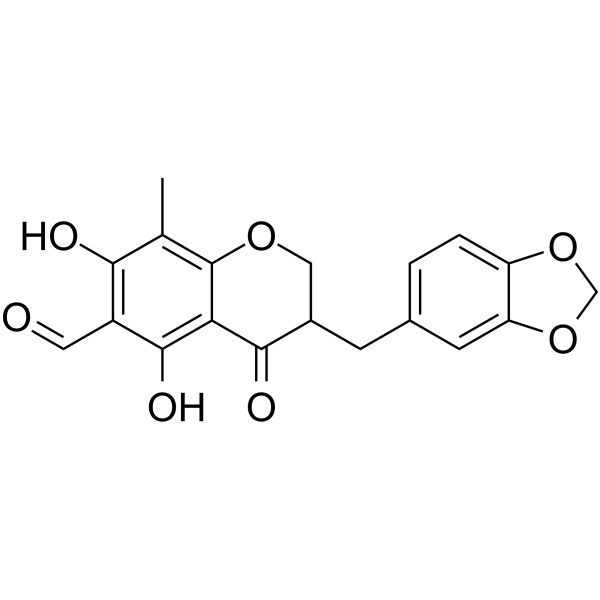N-Formyl-Met-Leu-Phe-Lys;(Synonyms: fMLFK)
N-Formyl-Met-Leu-Phe-Lys 是一种多肽,为有效、选择性的 FPR1 激动剂,对 FPR1,FPR2 和 FPR2-D2817.32G 的 EC50 值分别为 3.5 nM,6.7 μM 和 0.88 μM。
N-Formyl-Met-Leu-Phe-Lys Chemical Structure
CAS No. : 67247-11-4
| 规格 |
|
是否有货 |
|
| 100 mg |
; |
询价 |
; |
| 250 mg |
; |
询价 |
; |
| 500 mg |
; |
询价 |
; |
* Please select Quantity before adding items.
| 生物活性 |
N-Formyl-Met-Leu-Phe-Lys (fMLFK) is a peptide, acts as a potent and selective agonist of FPR1, with EC50s of 3.5 nM, 6.7 μM and 0.88 μM for FPR1, FPR2 and FPR2-D2817.32G, respectively[1].
|
IC50 Target |
EC50: 3.5 nM (FPR1), 6.7 μM (FPR2), 0.88 μM (FPR2-D2817.32G)[1]
|
| 分子量 |
|
| Formula |
|
| CAS 号 |
|
| Sequence |
|
| Sequence Shortening |
|
| 运输条件 |
Room temperature in continental US; may vary elsewhere.
|
| 储存方式 |
Please store the product under the recommended conditions in the Certificate of Analysis.
|
| Solvent Solubility |
In Vitro:;
H2O
Peptide Solubility and Storage Guidelines:
1.;;Calculate the length of the peptide.
2.;;Calculate the overall charge of the entire peptide according to the following table:
| ; |
Contents |
Assign value |
| Acidic amino acid |
Asp (D), Glu (E), and the C-terminal -COOH. |
-1 |
| Basic amino acid |
Arg (R), Lys (K), His (H), and the N-terminal -NH2 |
+1 |
| Neutral amino acid |
Gly (G), Ala (A), Leu (L), Ile (I), Val (V), Cys (C), Met (M), Thr (T), Ser (S), Phe (F), Tyr (Y), Trp (W), Pro (P), Asn (N), Gln (Q) |
0 |
3.;;Recommended solution:
| Overall charge of peptide |
Details |
| Negative (lt;0) |
1.;;Try to dissolve the peptide in water first.
2.;;If water fails, add NH4OH (lt;50 μL).
3.;;If the peptide still does not dissolve, add DMSO (50-100 μL) to solubilize the peptide. |
| Positive (gt;0) |
1.;;Try to dissolve the peptide in water first.
2.;;If water fails, try dissolving the peptide in a 10%-30% acetic acid solution.
3.;;If the peptide still does not dissolve, try dissolving the peptide in a small amount of DMSO. |
| Zero (=0) |
1.;;Try to dissolve the peptide in organic solvent (acetonitrile, methanol, etc.) first.
2.;;For very hydrophobic peptides, try dissolving the peptide in a small amount of DMSO, and then dilute the solution with water to the desired concentration. |
|
| 参考文献 |
|




